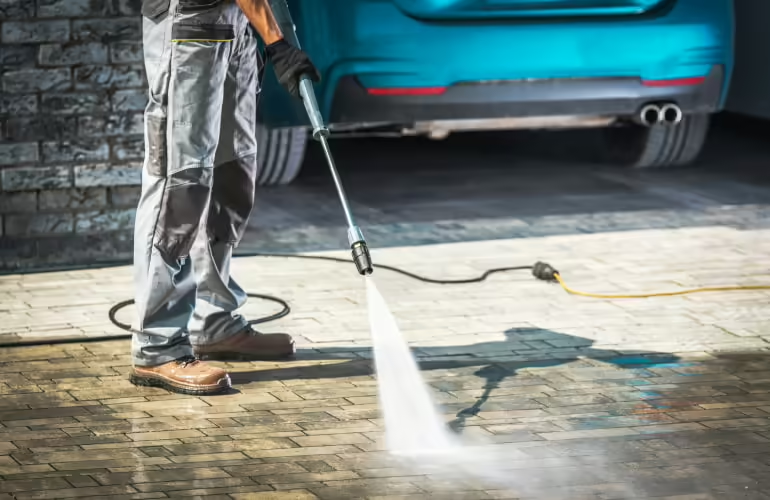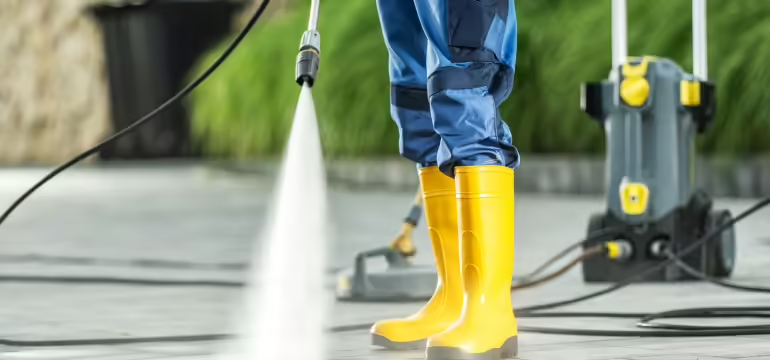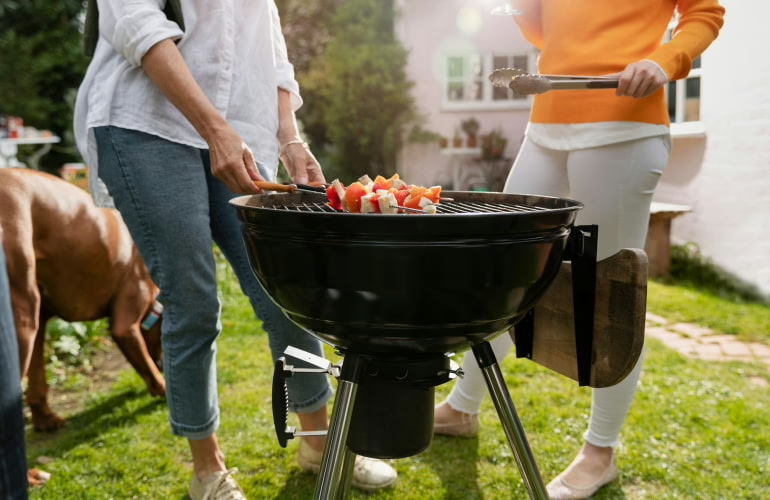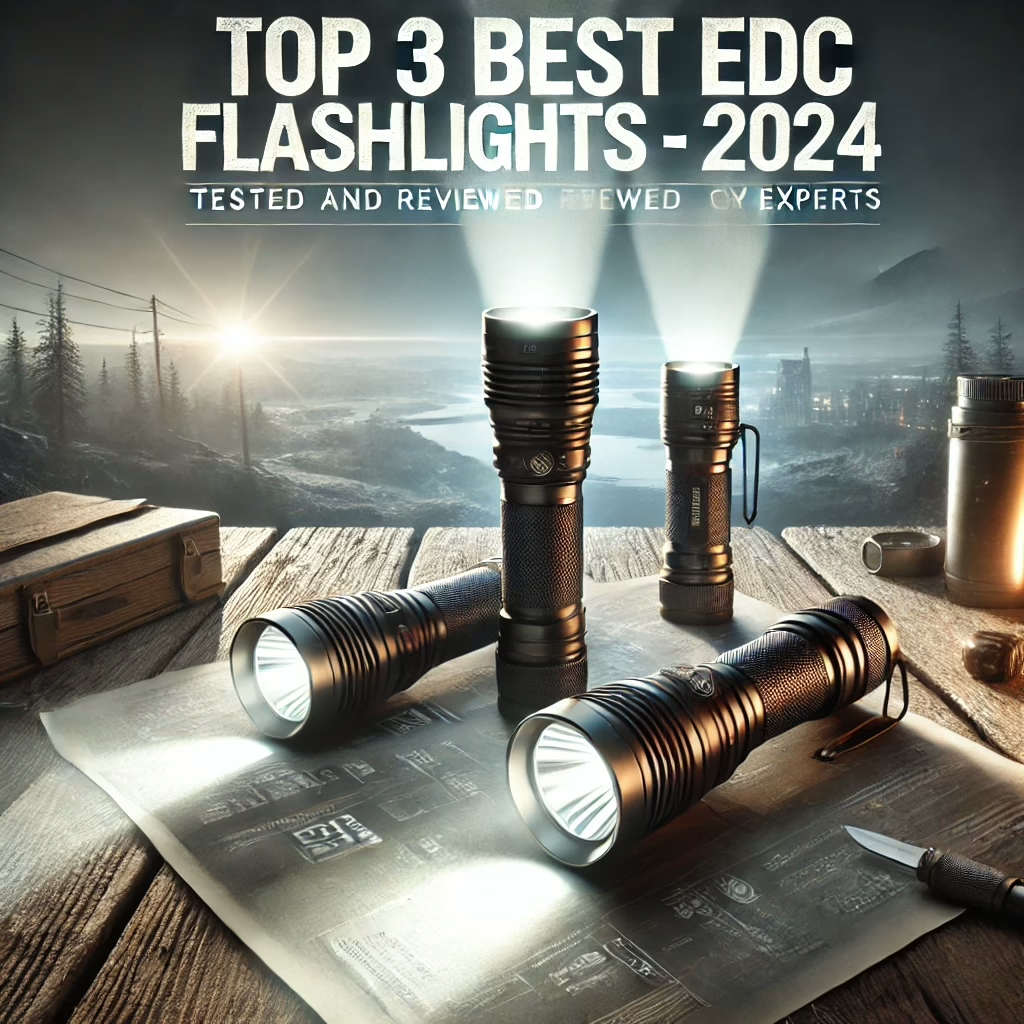Advertising Disclosure
A Guide to Choosing the Right Pressure Washer
Many modern devices have greatly improved our quality of life. Today, we will talk about a pressure washer. They are handy tools in everyday life. You can efficiently tackle various cleaning jobs with a suitable model. They can be used to clean your home’s exterior and maintain industrial equipment. The correct pressure washer saves you time. It also ensures a thorough and effective cleaning. This reduces the risk of surface damage and improves overall results. Understanding the different types of pressure washers available is crucial. These are electric models. They are generally quieter and more suitable for light to moderate tasks.
Gas-powered models are famous for their higher pressure and portability. This makes them ideal for heavy-duty jobs. Hot water pressure washers are effective for removing grease and challenging stains. You can optimize cleaning efficiency and performance. The correct pressure washer will deliver superior results and streamline your cleaning process. Choosing wisely ensures you invest in a perfect tool. This will meet your requirements. It also will provide lasting value.
Understanding Pressure Washer Specifications
You must understand critical specifications. They will help you select the suitable model for your needs. Here’s what to consider:
- PSI (Pounds per Square Inch): It measures the force of the water stream coming out of the nozzle. A higher PSI indicates a more powerful spray. A pressure washer with a 1,300 to 2,000 level is typically sufficient for washing cars or windows. Look for 2,500 to 3,500 PSI models for cleaning driveways or removing mildew. The pressure washer buying guide should emphasize selecting this level. This is generally based on the cleaning demands. It helps avoid over- or under-powering your tasks.
- Types of Engines: Electric ones are generally quieter. They are low maintenance and suitable for lighter tasks. It is ideal for residential use and areas where noise is a concern. Gas engines offer higher PSI and GPM. This makes them suitable for heavy-duty and commercial tasks. They are portable but require regular maintenance. Such models have higher noise levels.
- GPM (Gallons per Minute): It measures the water flow rate. Higher GPM means more water is generally used, which can enhance cleaning efficiency. A higher level results in faster cleaning as it covers more surface area per minute. A pressure washer with 1.5 to 2.5 GPM is adequate for most residential tasks. Commercial applications require 3.0 GPM or more. Understanding what to look for in a pressure washer is pivotal. It includes evaluating the balance between PSI and GPM for optimal performance.
- Additional Features: Adjustable nozzles allow you to customize the spray pattern and pressure. Longer hoses provide more flexibility and reach but may impact portability.
Match these specifications to your cleaning needs for effective and efficient results.
The Importance of PSI in Cleaning Performance
PSI determines the cleaning power of a pressure washer. It measures the force of the water stream. This directly affects how effectively you can clean various surfaces. Check the important factors:
- Low PSI (1,300 to 2,000 PSI): This is ideal for lighter cleaning tasks. They wash cars, clean windows, or remove dirt from delicate surfaces. It provides gentle cleaning with less risk of damaging surfaces. Low PSI also causes the paint to strip off. It is ideal for different types of pressure washers used in residential settings.
- Medium PSI (2,000 to 2,500 PSI): This is effective for medium-duty tasks. They are cleaning driveways, patios, and outdoor furniture. It balances power and safety. Medium PSI makes it versatile for various household chores without being overly aggressive.
- High PSI (2,500 to 4,000+ PSI): This is best for heavy-duty tasks. They remove stubborn grime, mildew, and paint from concrete or large decks. High PSI delivers powerful cleaning. It can quickly tackle tough stains and large areas. This requires careful handling to avoid damage.
So, how to choose a pressure washer? Understanding this question involves matching the PSI level to your cleaning needs. It also ensures you select a model with the appropriate power for your tasks.
Evaluating GPM for Efficient Cleaning
GPM determines how quickly a pressure washer can clean a surface. It measures the water flow rate. GPM affects the cleaning process’s overall efficiency and coverage. How to buy a pressure washer:
- High GPM (3.0+ GPM): More water is generally delivered to the surface. It allows for faster cleaning and better rinsing. This is particularly beneficial for large areas like driveways and commercial spaces. There, speed and thoroughness are crucial. High GPM is adequate for heavy-duty tasks. This is suitable when dealing with extensive dirt and grime. It requires more water to rinse away.
- Medium GPM (2.0 to 2.5 GPM): Provides a good balance between cleaning speed and water efficiency. It is ideal for medium-duty cleaning tasks. They are patios, decks, and household surfaces. Medium GPM is versatile for various residential tasks. It offers efficient cleaning without excessive water usage.
- Low GPM (1.5 to 2.0 GPM): Suitable for lighter tasks where excessive water is unnecessary. It helps in conserving water while still achieving effective results. Low GPM is best for cleaning cars, windows, and smaller surfaces. There, rapid rinsing is less critical.
Balancing PSI and GPM is essential for this question that meets your needs. Higher PSI provides more force, while higher GPM ensures faster cleaning. Choosing a pressure washer involves the right combination of these specifications. It will optimize your cleaning efficiency and performance.
Types of Pressure Washers and Their Uses
Pressure washers are essential for cleaning various surfaces. They are driveways to outdoor furniture. Two main types of pressure washers dominate the market. These are electric and gas-powered. Understanding their differences helps to select the right one for your needs.
Electric water-pressure washing m. They are ideal for small to medium-sized tasks. These tools are best suited for residential use, such as cleaning patios, decks, cars, and outdoor furniture. Electric models are quieter than gas-powered ones. They also require less maintenance. Such washers are perfect for environments where noise might be a concern. They typically offer lower pressure and flow rates. It might limit their effectiveness on tougher stains or larger areas.
Gas-powered pressure washers are much more powerful. They are generally designed for heavy-duty cleaning tasks. Such models are the go-to choice for driveways, sidewalks, and the exteriors of homes. Gas models are more portable since they don’t require an electrical outlet. They are heavier, louder, and require more maintenance. Gas-powered pressure washers emit fumes, making them less suitable for indoor use. Consider what to look for in a power washer:
- Pressure (PSI): Higher PSI means more cleaning power. Gas washers usually have a higher PSI.
- Flow Rate (GPM): A higher GPM cleans larger areas faster.
- Portability: Electric washers are easier to move around. But, they are generally limited by the length of the power cord.
- Noise Level: Electric models are quieter and more suited for residential areas.
- Maintenance: Gas washers require more upkeep, including oil changes and fuel management.
You should carefully consider these factors. So you can choose the pressure washer that best fits your cleaning needs and environment.
Choosing Between Electric and Gas-Powered Models
Are you deciding between an electric and a gas-powered pressure washer or power washer? Consider these essential aspects:
- Portability: Electric models are lightweight and easy to move. They are ideal for small tasks around the home. Gas models, though heavier, offer greater mobility since they don’t need a power outlet.
- Power Requirements: Do you need to clean large driveways, concrete, or heavily soiled areas? A gas-powered washer’s higher PSI and GPM will be more effective. An electric model will suffice for lighter tasks. They are washing cars, windows, or outdoor furniture.
- Maintenance: Electric washers require minimal upkeep – plug in and go. Gas models need regular maintenance. This is oil changes and fuel management. They produce exhaust fumes, making them unsuitable for indoor use.
You can choose between electric and gas-powered models. Assess your specific needs, ease of use, power, or maintenance.
Special Considerations for Heavy-Duty Cleaning
Selecting the proper pressure or power washer is essential. You’ll need a machine with a higher PSI. It would be best to have GPM ratings for industrial applications. This is generally designed to tackle the most challenging jobs efficiently.
Pressure washing basics for heavy-duty tasks:
- High PSI and GPM: Industrial pressure washers often exceed 3,000 PSI. They deliver up to 4 GPM, providing the force and water volume. This is generally needed to clean large surfaces, remove tough stains, and strip paint.
- Durable Construction: Industrial models withstand frequent use and harsh conditions. Look for washers with stainless steel frames and brass pump heads. Also, select ceramic pistons for longevity.
- Hot Water Capabilities: They are effective for grease, oil, or other stubborn residues. Such washers combine heat with high pressure to break down. They remove contaminants more effectively than cold water models.
- Extended Reach: Heavy-duty models often come with longer hoses and wands. They allow you to clean hard-to-reach areas without moving the machine frequently.
These features make industrial pressure washers the best choice for demanding environments. They ensure thorough and efficient cleaning.
Features and Accessories for Enhanced Functionality
You can maximize the effectiveness of a big pressure washer. Also, you may improve your cleaning results. Consider adding features and accessories. They enhance functionality. These additions can make your pressure washer more accessible for various tasks. Here are some pivotal features:
- Interchangeable Nozzles: They control the angle and intensity of the water spray. A set of interchangeable nozzles allows you to switch between a wide spray. This is crucial for general cleaning and provides a concentrated jet for tough stains. Common nozzle options are 0°, 15°, 25°, and 40° angles.
- Detergent Injection Systems: These systems enable the application of cleaning solutions. It happens directly through the pressure washer. They improve the removal of grime, oil, and other stubborn substances. Some washers feature onboard detergent tanks. Others have siphon tubes for external containers.
- Pressure-Adjustable Wands: They let you modify the pressure output on the fly. This makes it easier to transition between delicate surfaces. It may be windows and stricter materials. They are concrete without changing nozzles.
- Extension Wands and Surface Cleaners: They can make the job easier for high or hard-to-reach areas. Surface cleaners are attachments with rotating nozzles. They are excellent for large flat surfaces, providing even cleaning without streaks.
Now that we understand how to use a power washer. Incorporate these features. So you can adapt your pressure washer to various cleaning tasks. This makes it a more powerful and flexible tool.
Maintenance Tips and Best Practices
Maintaining your pressure washer properly ensures its longevity and safe operation. Whether you invest in a high-end model or choose a cheap pressure washer, regular upkeep is essential to keep it functioning optimally.
Here are some best practices:
- Oil and Fuel Maintenance: Regularly check and change the engine. Do this according to the manufacturer’s instructions for gas-powered models. Stale fuel can cause starting issues. So, always use fresh, clean gasoline. Add a fuel stabilizer if the washer will be generally stored for an extended period.
- Routine Checks: Inspect the hose, connections, and nozzles for any signs of wear or damage. Do it before each use. Ensure the water inlet screen is clear of debris. Blockages can reduce efficiency and cause damage. If you have a one-wash pressure washer, do a quick pre-use inspection. It can prevent costly repairs later.
- Proper Storage: After each use, run clean water through the system. Flush out any detergent or debris. Store the pressure washer in a cool, dry place, and disconnect the hoses and spray gun if possible. For cold climates, ensure the unit is fully drained of water to prevent freezing. It can crack internal components.
- Troubleshooting Tips: If your washer doesn’t start, check the spark plug for gas models. Inspect the electrical connections for electric ones. Clogged nozzles or worn pumps often cause low-pressure output. So, clean or replace these parts as necessary.
Follow these maintenance tips. They will keep your best-buy pressure washer running smoothly. This ensures it’s always ready to tackle your next cleaning task. Stay informed about the latest pressure washer technologies and cleaning tips.







